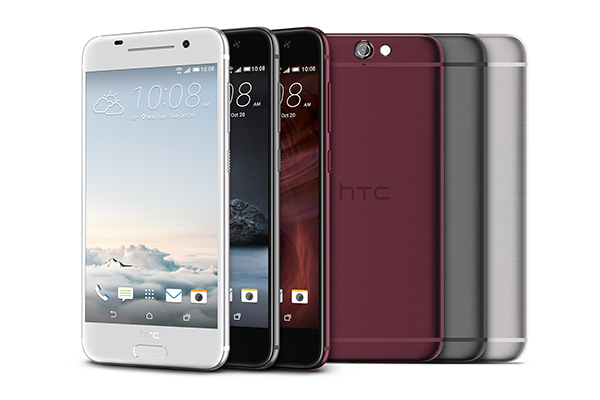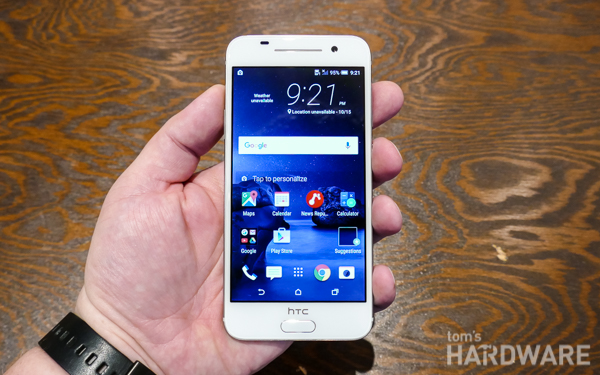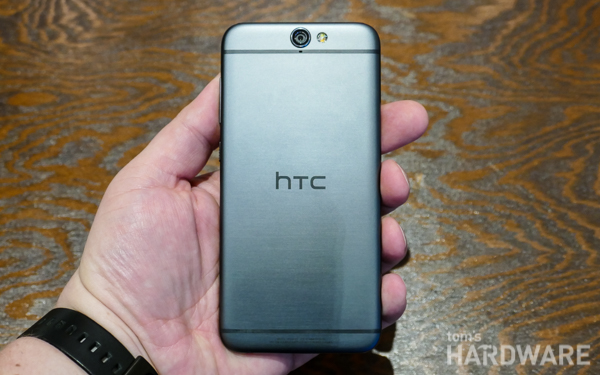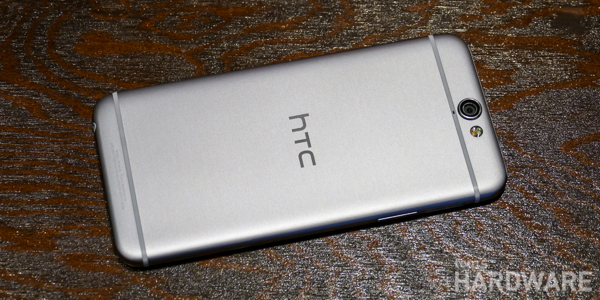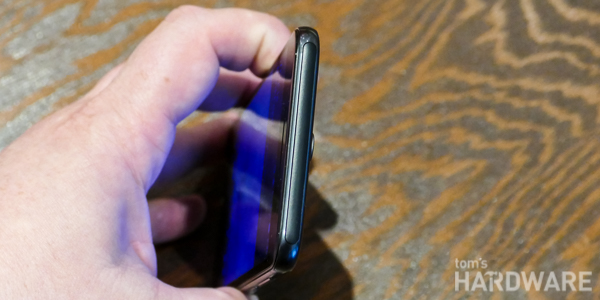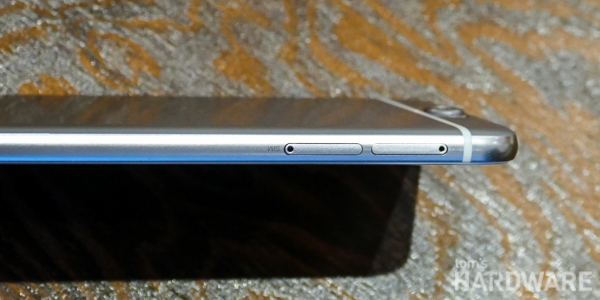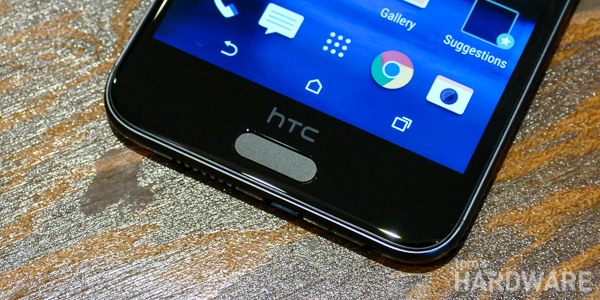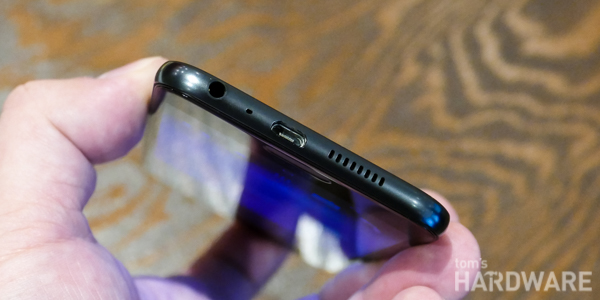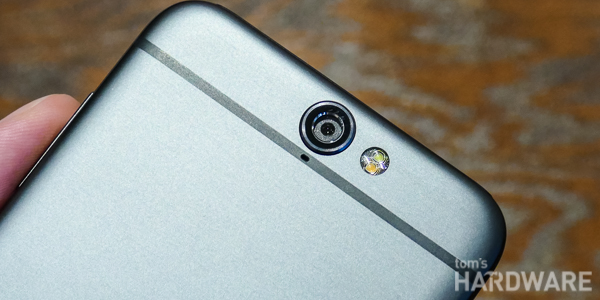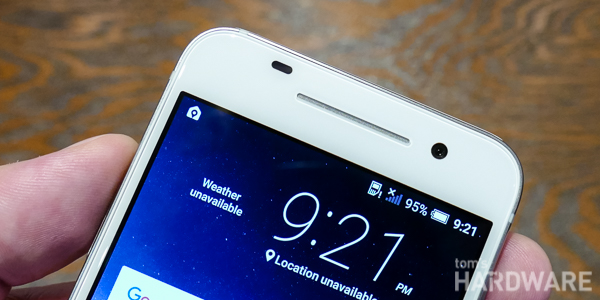HTC One A9 Smartphone: A Midrange iPhone 6 Clone
It's no secret that HTC has been going through some trying times as of late. While it would be easy to point a finger at the relative lack of success of its HTC One M9 flagship, that would be over-simplifying the situation. The truth is that as the cell phone market commodifies, every smartphone OEM (well, apart from Apple, but they are as always a unique case) is feeling the pinch, even leaders like Samsung. HTC knows the key to its long-term success is to diversify into other areas, and that's why it's putting so much into its VR efforts. Still, as primarily a smartphone manufacturer today, it does need to release new products, and also hopefully correct some of the wrongs of the M9.
Today marks the (virtual) announcement of the next phone in its flagship One series, the HTC One A9. This phone is another all-metal unibody handset, but more of a mid-tier offering than its predecessor. It uses Qualcomm's new Snapdragon 617 SoC and has a 5-inch display. HTC is one of the few Android OEMs left that has resisted putting a bigger screen in its flagship phones, something many Android users not interested in jumping on the phablet bandwagon are probably thankful for. However, this time around, the design of HTC's latest is -- how should we say it -- quite familiar, which is surely going to be a polarizing aspect of the One A9.
RELATED: Hands-On Video Of The HTC One A9
Specifications
| SoC | Qualcomm Snapdragon 617 64-bit Processor (4 x Cortex-A53 @ 1.5 GHz and 4 x Cortex-A53 & 1.2 GHz) with X8 LTE |
|---|---|
| Display | 5.0-inch Full HD AMOLED (1920 x 1080, 441ppi) |
| Memory | 16 or 32 GB eMMC ROM, 2 or 3 GB LPDDR3 RAM / microSD slot (up to 2 TB) |
| Camera | Rear: 13MP with f/2.0 aperture and OIS, manual Pro Mode with RAW capture, 1080p video captureFront: HTC UltraPixel 4MP with f/2.0 aperture, 1080p video capture |
| Battery | 2,150 mAh (non-removable), Quick Charge 2.0 |
| Operating System | Android 6.0 with HTC Sense |
| Size & Weight | 145.75 x 70.8. x 7.26 mm, 143g |
| Network | LTE Cat. 7 (up to 300 Mbps DL/100 Mbps UL) Bands 2, 3, 4, 5, 7, 12, 13, 17, 29 |
| Connectivity | Wi-Fi 802.11 a, b, g, n, ac / Bluetooth 4.1LE / NFC / USB 2.0 |
| Security | Fingerprint reader |
| Audio | Downward-facing mono speaker, 24-bit audio DAC |
| Materials | All-metal aluminum unibody |
| Colors | Carbon Gray, Opal Silver, Topaz Gold and Deep Garnet |
| Carriers | Unlocked from HTC, carriers TBA |
| Pricing | U.S.: $400Canada: $549for 3 GB / 32 GB unlocked model |
The iPhone Clone
Usually when we write about a new phone, we cover its hardware specifications first before we dive into its design. However, due to this "familiar" aspect of the A9's design, we think that this time around its design will be the best place to start, and we all know what you are all thinking: Yes, it does look like an iPhone. A lot. This no doubt controversial aspect of the device is probably why it was the first topic of discussion when HTC briefed us on the phone.
Before anything else, let's get this straight. Apple isn't going to sue HTC into the ground over the A9. To start, part of HTC's 2013 settlement with Apple was a 10-year licensing agreement that covered all past, present and future patents. With this agreement in place, it's almost as if the A9 is an "officially licensed" iPhone clone! Also, the results of the Apple/Samsung lawsuit showed that trade dress (the "look" of a device) isn't something that can be infringed upon.
That's not to say that Apple will be pleased, because in all honesty, this isn't like the Galaxy S6, which shares many similarities with the design of the iPhone 6 but incorporates some unique Samsung twists such as the colored glass back. The HTC A9's design is almost identical to the iPhone 6. This is to say that it is very good, but in absolutely no way original, despite HTC giving this new design approach a cool-sounding name: "metalmorphics."
In its defense, HTC is correct in saying that it was the first to release a smartphone with an aluminum unibody, 2010's HTC Legend, and that embedding the plastic antenna bands into the metal chassis that the iPhone and A9 both use was something it pioneered on the One M7. So it is true that many other phone makers, including Apple, have copied HTC's innovations to an extent.
Get Tom's Hardware's best news and in-depth reviews, straight to your inbox.
HTC did highlight that its plastic bands are less noticeable than those on the iPhone 6, and that placing the camera on the center light instead of offset to one side is a technical challenge. But then the reps also pointed out the 2.5D edges of the screen's glass, just like the iPhone's.
The HTC One A9 does have some unique touches that make it stand out, though. I prefer the color options of the A9 to the current iPhone offerings, especially the red "Deep Garnet" color. I also like the two-tone finish of the chassis, and the back has a nice, smooth, brushed-metal finish, with the sides polished.
The One A9 does continue HTC's "tradition" of not having the best screen-to-body ratio, making it a fairly large device for one with a 5-inch display. It's even slightly bigger than both the HTC One M9 and Galaxy S6. However, with many other current flagships pushing a 5.5- or even 5.7-inch screen, the A9 is still on the small size for a modern Android flagship.
Midrange Hardware, But Midrange Demands
Compared to all the hoopla above about the A9's external hardware, its internal specs are fairly pedestrian, befitting its mid-tier status. With the competition and margins in the premium flagship space becoming increasingly cutthroat, HTC has wisely decided to court the mushy middle with a phone that has premium design and materials, but average (yet acceptable for most) performance that can be sold at an aggressive price point.
The A9 uses the new Qualcomm Snapdragon 617 SoC, which was only just announced in September. There isn't that much difference between the older 615 and this new SoC. Both are octo-core Cortex A-53 chips with an Adreno 405 GPU, and both are manufactured on a 28nm process.
What is new with the 617 is a new, faster Cat 7 LTE-capable X8 modem that supports 2x20 MHz carrier aggregation, an upgraded Hexagon 546 DSP, and support for Quick Charge 3.0.
The decision to go with the 617 must have been a late one by HTC considering it was only just announced, and we assume the A9 was originally going to be a 615 device. However, when the opportunity arose to equip it with something slightly better, HTC jumped. As for the existence of the 617 itself, it is clear that it's a stop-gap SoC to give Qualcomm a "new" offering this fall while we wait for the (apparently?) delayed Snapdragon 618 and 620 that both use a brand-new next-gen Adreno 510 GPU.
As for storage and RAM, there isn't anything notable to remark on, other than HTC deciding to join other vendors in offering a device with two RAM configurations. HTC continues to believe in the need for a microSD slot, located on the A9's side. Its non-removable battery is a piddling 2,150 mAh; though disappointing, this is to be expected from an all-metal phone this thin.
Yet the 617 SoC and 1080p display shouldn't push it too hard, so battery life should be acceptable, and the A9 does support Qualcomm's Quick Charge tech. (The SoC does support the new faster 3.0 standard, the spec sheets we received for the phone only mention 2.0, so we'll have to investigate further.) Speaking of the display, the A9's 5-inch screen is an AMOLED panel, which is a big departure for HTC, which typically uses LCD screens in its phones.
Another new feature is the fingerprint reader located under the home button. The addition of a fingerprint reader ties in nicely the release of Android 6.0 Marshmallow (which the A9 runs), the first version of Android to natively support this tech.
On the audio side of things, HTC seems to have taken one step forward and two steps back. The A9 incorporates a 24-bit DAC that will mean it produces better quality audio. Unfortunately, that great-sounding audio will be coming only from the headphone jack (that also has an amplifier); HTC has dropped one of its signature features, the stereo front-facing speakers. There's just a single downward-firing one (just like the iPhone!). We were told that the omission of the speakers was in order to fit the fingerprint reader.
Camera: No More UltraPixel, And Not Much Information
HTC hasn't had a good run when it comes to the cameras on its phones over the past few years. The One M7 introduced its 4MP UltraPixel technology that may have made sense at the time, when the low-light performance of most other smartphone cameras was mediocre. HTC bet on the wrong horse, though, and newer high-MP count sensors soon out-classed the UltraPixel sensor in all shooting conditions.
Therefore, HTC made the right decision to ditch UltraPixel for a rear-facing camera, relegating it to selfie duty in the front. With the A9, HTC hasn't really said too much about its camera hardware. We know that the A9 has a 13MP sensor on the back, and even when asked, HTC would not share any additional information about it, citing that throughout the phone's production run the sensor may be sourced from multiple vendors.
The lack of information doesn't inspire us with much confidence that the A9's camera hardware will be anything special. It does have OIS, though, so that's something.
What HTC is promoting is the camera software capabilities of the A9, which is an area in which HTC has always been strong. Its camera UI is one of the best out there, and the A9 has a full manual Pro mode that is capable of RAW capture.
RELATED: Camera Phone Technology 101
Back To Stock, Sort Of
Nearly all HTC-branded devices have come with its Sense UI interface on top of Android. In the early days of Android, a decent third-party UI was almost a necessity, due to how bad the UI was on early versions of Android. Over the years, though, stock Android's UI has gotten much better, to the point now that most would agree that it is actually superior.
It seems like HTC has finally realized this; we were told that the One A9 would be running a close-to-stock version of Android. HTC realized that its custom applications often duplicated Android's native apps, which led to confusion for many consumers.
On the One A9, HTC has relied more on Google's own apps. Despite this change, though, the A9 is still running Sense UI, so the launcher, app drawer, and settings menus are not stock Android. However, we were told that they might eventually move into the direction of offering a more stock-like experience with future devices.
The other big software feature of the A9 is that it should be the first phone to ship outside of Google's Nexus devices with the latest version of Android on board – Android 6.0 Marshmallow. This means the A9 will fully support new Android features like Android Pay and Now on Tap.
Pricing and Availability
The HTC One A9 is aggressively priced at $400 in the U.S. (and $550 in Canada) for an unlocked edition that can be ordered directly from HTC. This model will initially come only in Opal Silver and Carbon Gray, but the gold and red models will be available at a later date. In the U.S., this unlocked model will come with HTC's one-year UH OH accidental damage warranty and six months of Google Play Music. Of note is that the $400 U.S. price tag appears to be a limited time promotional price.
What we don't know right now is anything about any carrier availability in the U.S. and Canada. It's most definitely coming to AT&T (the company tweeted about HTC's announcement today), but beyond that, we don't know anything.
Attack Of The Clone
Despite our reservations about its design, we do think that the HTC One A9 is a very compelling mid-range phone. Although there are many questions that still need to be answered, such as the 617 SoC's performance, how good the battery life will be, and how well the camera performs, there is a lot to like about the A9. We have a hard time thinking of many other phones at this price point that are made from premium materials, look this nice, and come with comparable features.
Update, 10/20/15, 10:10am PT: U.S. pricing and availability has been added to the specification table. The unlocked North American version of the A9 will come with 3 GB of RAM, 32 GB of storage and can be pre-ordered in the U.S. in Carbon Gray, Opal Silver and Deep Garnet. There are two unlocked models, one compatible with AT&T and T-Mobile, and one with Sprint. In Canada, you can order only the Gray and Silver models. The HTC One A9 will be available beginning November 2015.
Alex Davies is an Associate Contributing Writer for Tom's Hardware and Tom's IT Pro, covering Smartphones, Tablets, and Virtual Reality. You can follow him on Twitter. Follow Tom's Hardware on Twitter, Facebook, and Google+.
-
jimmysmitty The front looks more like a Galaxy more than an iPhone, with the same shaped front button.Reply
-
floppyedonkey Looks like time for HTC to die off, nothing compelling coming from that camp any more.Reply -
apertotes Wow! So, first Apple copies HTC with the iPhone 6, and now it is HTC who is copying Apple? It had been months since I had read an article as biased as this one.Reply -
captaincharisma so what if it looks like an iphone? HTC is just offering an iphone 6S with a better OSReply -
wkwilley2 If someone was holding it and had the logo obscured with their fingers, then yeah, it looks like an iphone, from the front, it looks nothing like an iphone.Reply -
GPUEnthusiast Now, now. Let's not be so dystopian..Reply
First of all, great review by Mr. Davies as always.
HTC is stuck in the same rut that Archos was stuck in, in the mid 2000s. Archos had one of the first and best MP3 players with a touch screen. They also had one of the first video MP4 players which had 100GB of storage, a massive amount for the time. Yet now, they are delegated to making cheap low end budget Android smartphones and some feature phones.
The difference is, I believe HTC will be able to get a grip and innovate. The Vive VR Headset that they are making for Valve already shows a large amount of hope, and for all intents and purposes, the HTC One M7 and One M8 were great flagships, on par with the S4 and S5, and Xperia Z2 and Z3 that they competed with. The biggest failings of the One M9 was the piss poor camera, and blistering fully clocked Snapdragon 810 chipset. -
targetdrone ReplyThe front looks more like a Galaxy more than an iPhone, with the same shaped front button.
Well the S6 is a high end iPhone clone. The HTC is a mid-range clone
-
jimmysmitty Reply16813230 said:The front looks more like a Galaxy more than an iPhone, with the same shaped front button.
Well the S6 is a high end iPhone clone. The HTC is a mid-range clone
I am not talking about the S6. It looks like a S4 from the front. Samsung has used the same front button for most of their Galaxy phones. -
cknobman $400 for a slow processor, small non removable battery, and a (more than likely) underwhelming camera?Reply
Yeah this thing will sell like hotcakes :rolleyes: -
fudoka711 Really displeased with the lack of stereo front facing speakers.Reply
The ones on the original M7 still beat any other smartphone's speakers to date.
